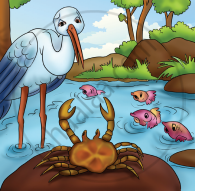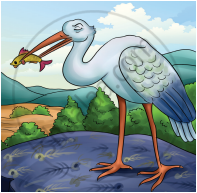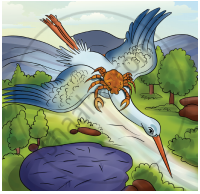Advertisements
Advertisements
प्रश्न
Now write a paragraph or two about these two stories, comparing them.
उत्तर
Who Did Patrick’s Homework is, in my opinion, better than ‘Taro’s Reward.’. Patrick hated homework. He played hockey and basketball instead. This was something quite natural. All children find doing homework boring and dull. Taro, on the other hand, was a thoughtful, wise, and hardworking boy. He was just the opposite of Patrick. Even God favours and rewards such a boy. A magical waterfall gave him an intoxicating drink for his old father. Both stories teach us lessons.
APPEARS IN
संबंधित प्रश्न
Fill in the blank with the suitable word.
He ran _____________ from home at the age of ten.
What brought the six humans together? Where were they?
How does Sarojini Naidu allude to the patriarchal system of her times? Discuss.
Explain the use of figurative language in the poem.
Thus I entered, and thus I go!
In triumphs, people have dropped down dead,
"Paid by the world, what dost thou owe
Me? "....God might question; now instead,
'Tis God shall repay: I am safer so.
Read the above lines and amswer the question that follow.
Explain with reference to the context.
What kind of atheletes were they?
Show how the story though Indian in context is quintessentially human also. Discuss.
What do you gather about Crocker-Harris from the play?
Comment on the way in which the story is narrated from Satyajit's perspective.
Discuss with your partner and describe the atmosphere in the woods when Peter Crouch was heading towards Mrs. Adis’s House. It was -
- a dark moonless night.
- _________________________
- _________________________
Complete the flow chart showing the events on the day of the assault.

Imagine what must have happened after Mathilde’s friend discovered that the diamonds were real. Do you think she would return the necklace to Mathilde? Would that make Mathilde happy?
Think and write in your own words.
Why does the traveller doubt that he shall ever come back?
Write an informal letter from a teenager to his/her parent, expressing a few thoughts from the poem.
(My dear ______/Dearest ______./Hi! ______ Are you surprised to see this letter? I wanted to talk to you about this, but then I thought I will be able to express myself better in a letter. Love,/Yours lovingly/Yours ______).
If you are asked to choose from any one of these toys which one do you choose? Give reasons. (plastic toys, wooden toys, clay toys, metallic toys)
Complete the following picture board.
 |
 |
 |
 |
What did he keep doing while on his rounds?
Write conversation on the following situation.
Between two friends on a picnic they enjoyed recently
Summarizing is to briefly sum up the various points from the notes made from the below passage.
The Sherpas were nomadic people who first migrated from Tibet approximately 600 years ago, through the Nangpa La pass and settled in the Solukhumbu District, Nepal. These nomadic people then gradually moved westward along salt trade routes. During 14th century, Sherpa ancestors migrated from Kham. The group of people from the Kham region, east of Tibet, was called “Shyar Khamba”. The inhabitants of Shyar Khamba, were called Sherpa. Sherpa migrants travelled through Ü and Tsang, before crossing the Himalayas. According to Sherpa oral history, four groups migrated out of Solukhumbu at different times, giving rise to the four fundamental Sherpa clans: Minyagpa, Thimmi, Sertawa and Chawa. These four groups have since split into the more than 20 different clans that exist today.
Sherpas had little contact with the world beyond the mountains and they spoke their own language. AngDawa, a 76-year-old former mountaineer recalled “My first expedition was to Makalu [the world’s fifth highest mountain] with Sir Edmund Hillary’’. We were not allowed to go to the top. We wore leather boots that got really heavy when wet, and we only got a little salary, but we danced the Sherpa dance, and we were able to buy firewood and make campfires, and we spent a lot of the time dancing and singing and drinking. Today Sherpas get good pay and good equipment, but they don’t have good entertainment. My one regret is that I never got to the top of Everest. I got to the South Summit, but I never got a chance to go for the top.
The transformation began when the Sherpa Tenzing Norgay and the New Zealander Edmund Hillary scaled Everest in 1953. Edmund Hillary took efforts to build schools and health clinics to raise the living standards of the Sherpas. Thus life in Khumbu improved due to the efforts taken by Edmund Hillary and hence he was known as ‘Sherpa King’.
Sherpas working on the Everest generally tend to perish one by one, casualties of crevasse falls, avalanches, and altitude sickness. Some have simply disappeared on the mountain, never to be seen again. Apart from the bad seasons in 1922, 1970 and 2014 they do not die en masse. Sherpas carry the heaviest loads and pay the highest prices on the world’s tallest mountain. In some ways, Sherpas have benefited from the commercialization of the Everest more than any group, earning income from thousands of climbers and trekkers drawn to the mountain. While interest in climbing Everest grew gradually over the decades after the first ascent, it wasn’t until the 1990s that the economic motives of commercial guiding on Everest began. This leads to eclipse the amateur impetus of traditional mountaineering. Climbers looked after each other for the love of adventure and “the brotherhood of the rope” now are tending to mountain businesses. Sherpas have taken up jobs as guides to look after clients for a salary. Commercial guiding agencies promised any reasonably fit person a shot at Everest.
